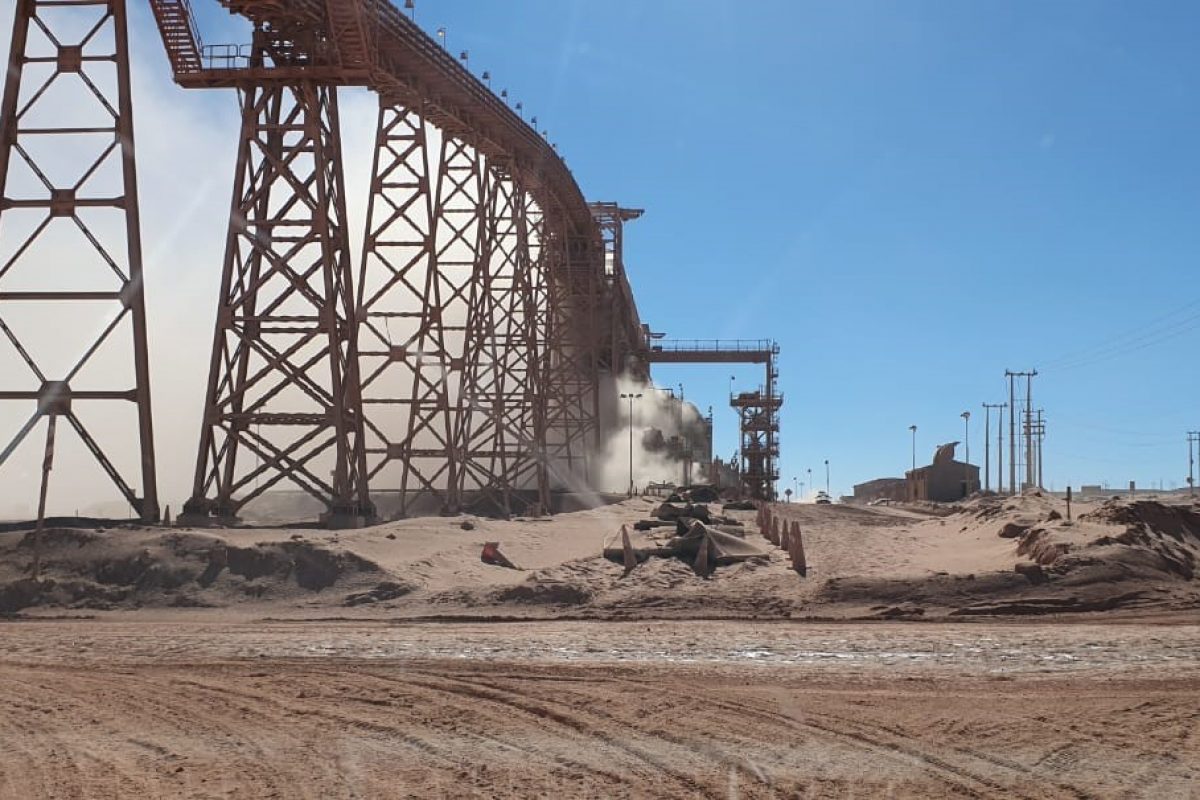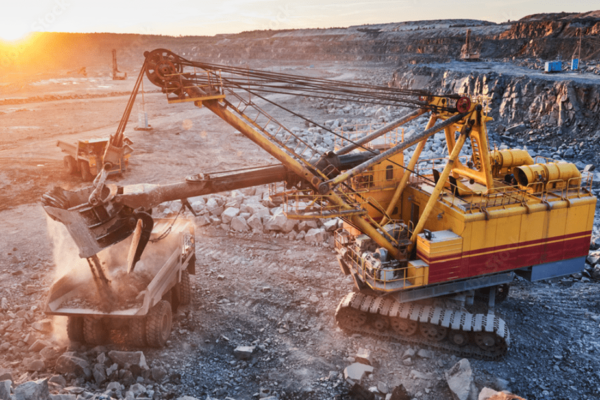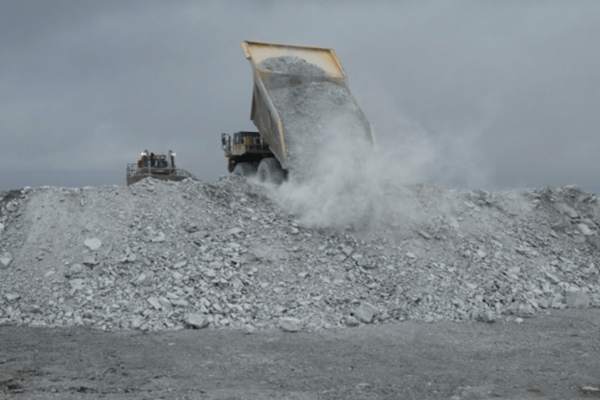Silica in suspension is a chemical component generated in various processes such as mining, metallurgy, and construction. Silica in suspension can travel long distances and impact the health of surrounding communities with chronic and degenerative pulmonary and cardiovascular diseases.
Workers and communities exposed to silica on a daily basis should be protected through preventive monitoring and control actions to prevent serious diseases.
Next, we will discuss what silica is, the types of silica, the silicosis eradication plan and innovative technologies for real-time silica monitoring and control.
What is silica?
Silica, represented by the chemical formula SiO2 (silicon dioxide), is the second most abundant mineral in the earth’s crust, as it is found in the form of sand, rocks and minerals. This mineral can be found in crystalline forms such as quartz, tridymite, cristobalite and tripoli, or in amorphous forms such as silica gel or colloidal silica.
Difference between Crystalline Silica and Amorphous Silica
Crystalline silica is an aggregate of small crystals, due to the well-defined structural arrangement between the oxygen and silicon atoms. Its most common forms are quartz, cristobalite and tridymite, and quartz is responsible for more than 99% of occupational exposures.
Unlike crystalline silica, amorphous silica has a disorganized structural arrangement and its toxicological properties are very different from those of crystalline silica. Consequently, exposure to amorphous silica is less harmful to human health.
Crystallized free silica is the main cause of the disease Silicosis.
What is silicosis?
The International Labor Organization (ILO) defines pneumoconiosis as “lung diseases caused by the accumulation of dust in the lungs and the reaction of tissues to the presence of these dusts”.
Silicosis is a chronic, incurable disease caused by the inhalation of small, highly abrasive crystalline silica particles that pass through the respiratory system and are deposited in the lungs. As the human body cannot eliminate the hard, fine silica particles that reach the pulmonary alveoli, they become embedded, forming a fibrosis in the tissue, which causes hardening of the lungs. This hinders progressive respiratory activity.
In addition, the injured lung can cause an overload on the right side of the heart, which pumps blood to the lungs. This additional strain can cause permanent damage to the heart and, as a result, the person’s heart health deteriorates and he or she may die from cardiovascular problems.
What must mining companies do?
- Implement an Occupational Health and Safety Management System (OHSMS) that includes the risk of silica;
- Implement Environmental and Health Surveillance Programs, with the collaboration of the Administrative Body;
- Train its workers on silica exposure;
- Implement all control measures to eliminate, reduce or control exposure;
- Implement all control measures to eliminate, reduce or control exposure, as indicated in the Protocol and those recommended by the IST
Silica - innovative monitoring and control measures
First, you should always avoid/eliminate dust-generating activities as much as possible by choosing and maintaining equipment with lower dust emissions, proper enclosures, and filter systems that keep the dust within the process and avoid dust emissions. Keeping the house in order can reduce dust emissions by up to 50%.
Secondly, a dust control specialist can recommend to you a combination of engineered dust control solutions such as dry fog, fine mist, dust collectors, improvements of feeding, discharge and transfer points and enclosures.
Finally, companies need to put control loops into account dust concentrations, visibility indicators, throughput, and weather conditions such as wind speed, wind direction, air pressure, and moisture and temperature changes that lead to air stagnation conditions. These control measures are crucial to improving control measures and ensuring you run a continuous silica dust-controlled operation. Ensure your personnel wears the proper personal protective equipment regarding respiratory protection to avoid exposure to health risks due to uncontrolled dust levels along their work schedules.
For industrial mining groups, dust suppression ensures the safety of the labor force and the productivity of operations, so investing in the best dust suppression solutions, monitoring solutions, and continuously improving systems is a significant priority for extractive companies.
Extreme dust and silica level control DMS-EXTREME Silica
ABCDust can monitor airborne dust levels by using state-of-the-art measurement technologies. Alongside solid methodologies supported by years of research and development, Health and Safety professionals can use this technology to assess dust and silica levels in the atmosphere under different environmental conditions. Using this data, you can determine which suppression method and personal protection equipment ensure mine safety while guaranteeing competitive mining operations.
DMS-One Extreme incorporates advanced sensors that examine multiple real-time detection parameters for respirable crystalline silica (RCS), including size, symmetry, and optical markers. It simultaneously deploys optical refraction technology with light scattering. It provides an optimal monitoring and optimization system with real-time dust concentration measurement, multiple gravimetric samplers, and current and forecasted weather conditions assessment toward preventive alarms.
Monitor extreme levels of particulate matter
DMS-FOG
DMS-FOG is an effective dust control solution that uses smart dry fog and fine mist systems. Dust suppression systems in DMS-FOG consist of stainless nozzles that can produce either fog or mist. Using microscopic amounts of water, the system covers the source of dust and prevents dust particles from going airborne. Emissions of dust can also be avoided by applying dust control additives to the water suppression systems.
The system can be equipped with specific stainless nozzles depending on the purpose it is being used for. This increases the durability of the hardware and therefore reduces the amount of time and resources needed for maintenance. Furthermore, controlled temperature technology implemented by DMS-FOG guarantees its effectiveness regardless of weather conditions.
By using DMS-FOG in tandem with other dust control solutions like DMS-TDS additives, the efficiency of dust suppression can be drastically enhanced while also saving on water and operational costs.
With the use of the DMS-ONE system, the capabilities of DMS-FOG can be monitored and optimized, reducing water and energy consumption. The control system considers automation features, which include timing controls using input and output sensors to optimize dust suppression and resource use. The system is delivered in an IP66 enclosure and is water and dust-resistant.
DMS-TDS: Non ionic highly concentrate dust control and anticrust additive
DMS-TDS is a non-ionic chemical additive that can help control dust by restructuring water particles. This substance is designed using a proprietary mixture of non-ionic surfactants, alcohols, and nano-polymers. The resulting mixture of these components is highly surfactant, efficiently reducing the tension between H2O particles and other materials.
The main attributes and characteristics of DMS-TDS are:
- Minimizing dust in the atmosphere, improving air quality and visibility;
- Drastically increasing the resource effectiveness of water;
- Being a highly concentrated solution, which facilitates its transport and storage;
- Resistance to acidic, alkaline, and salt water;
- Having a non-ionic, non-toxic, and non-corrosive chemical composition;
- UV resistance.
Water particles modified by DMS-TDS are able to capture and absorb fugitive dust particles, effectively minimizing dust in the atmosphere. DMS-TDS solutions are often used as dust suppression plant aggregates for cargo fronts, conveyor belts, and other structures at risk of dust collection. A major advantage of implementing DMS-TDS is the resource-effective use of water. Using DMS-TDS to suppress dust can reduce water needs by up to 90-95%.
The chemical is applied by mixing it with water and spread using water cannons or sprinkler systems. The specific dose of DMS-TDS used is determined by the type of dust being suppressed. It is possible to use a DMS-TDS solution together with the dust suppression systems of DMS-FOG, creating an extremely efficient integrated system.
Smart dust control and soil stabilization
ABCDust distinguishes itself by providing integrated dust control and monitoring system solution in a mining environment. Backed by customized additives, controlled application, performance monitoring, and control and forecasting systems, ABCDust can deliver effective dust control measures and soil stabilization aggregates.
ABCDust’s mission is to improve air quality while reducing water and energy consumption to protect workers and communities nearby and increase our client’s productivity by developing and using innovative technologies.
Contact ABCDust and learn more about how you can monitor and control your crystalline silica and dust emissions to establish effective control in your operations.




